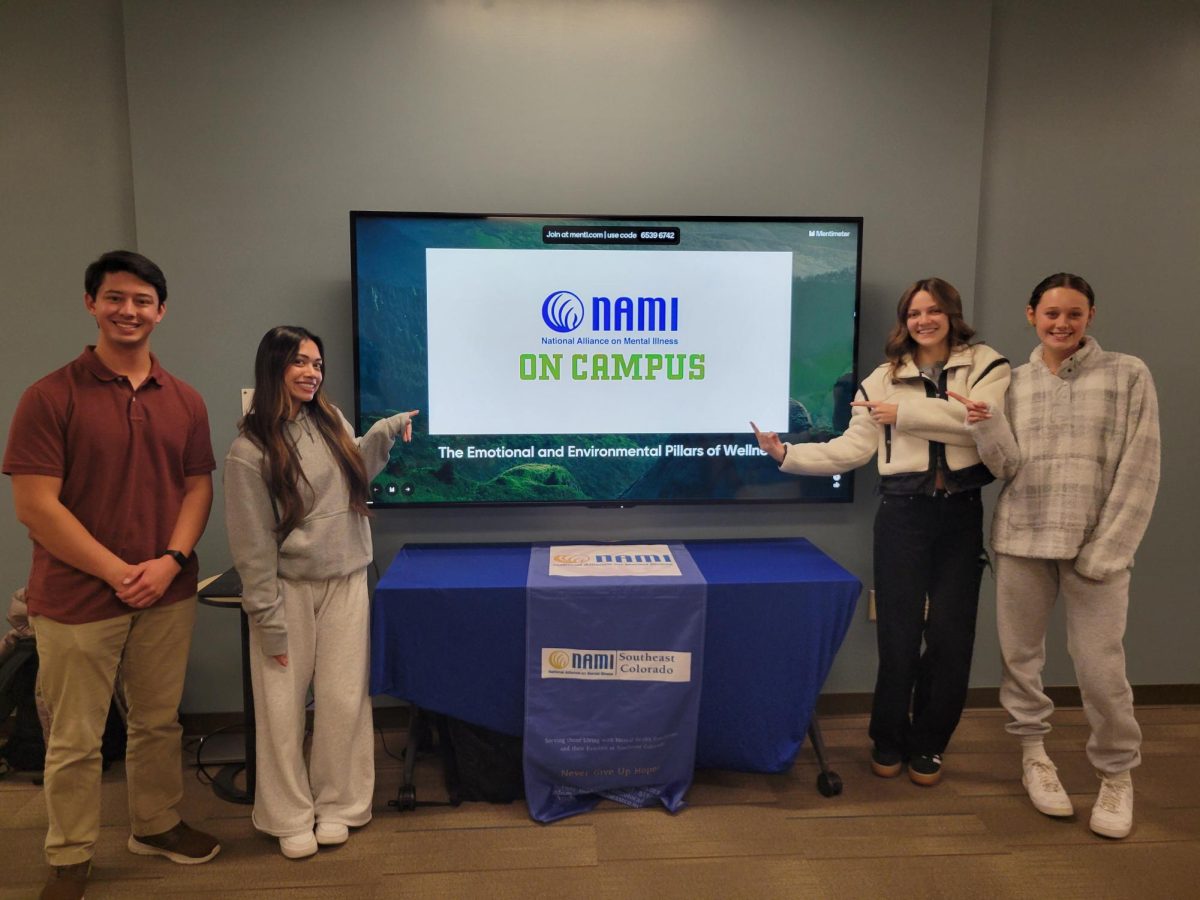
The exhibit runs until Sept. 29 and features photography taken by CSU-Pueblo photography professor Liz Johnson and New Orleans based photographer Tina Freeman.
Johnson and Freeman met at an Antarctica photography expedition in November 2011, where they were assigned as cabin mates.
“We were lucky to get along so well having just met in Ushuaia, Argentina the day before our journey began,” said Johnson.
Freeman was not at the gallery reception but will be at the university to view the gallery later this month. “I thought it would be interesting to exhibit our images together to compare and contrast similarities and differences of our photographic documentation of the experience we shared,” said Johnson.
Johnson moved to Colorado from Massachusetts in 2001 and experienced a drought for the first time in her life. Since then, Johnson has become very interested in water and its significance.
“I began reading books about water, its qualities, conservation, symbolism, and poetry,” said Johnson.
After becoming compelled by water, Johnson created an exhibition titled “The Silence of Water” which also featured images of ice.
“I thought about ice as a symbol of impermanence,” she said.
Johnson’s motivation to photograph ice and water led her to attend the Antarctica photography expedition in November 2011.
Johnson said she knew the trip would be great, but didn’t want to get her hopes up to be let down.
“I tried not to have any expectations but they were exceeded,” Johnson said.
Prior to the expedition, Johnson prepared, researched and accumulated gear for the journey. Johnson said the weather was similar to the winters in Colorado because of how it was sunny, snowy, and the temperatures were in the 20s.
Johnson notes that in her research she found that the eco-systems are changing quickly because of both fishing in the waters around Antarctica and global climate change.
Freeman also notes that the landscape was quickly changing. In her book of photos taken on the journey she wrote, “One cannot re-experience the same extraordinary piece of ice. This applies to not only the icebergs but the landscapes as well.”
“The newfound eco-consciousness has caused a surge in eco-tourism. Ecologists are concerned about the growing visitor numbers and the impact on the environment,” Johnson. “But contrary to popular belief researchers are not opposed to the tourism.” Johnson added.
“The images in this exhibit are just a sampling of the thousands of photographs I made on my trip. There is a saying that you go to Antarctica as a tourist and you return as an ambassador,” said Johnson.
“We would experience all sorts of ice, birds, seals, orcas, rain, snow, sleet, extraordinary silence and extreme beauty. It took only five days to become smitten,” Freeman added.







